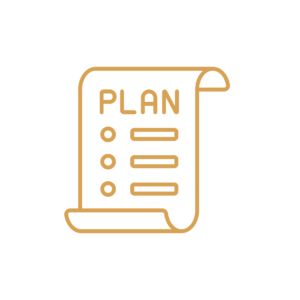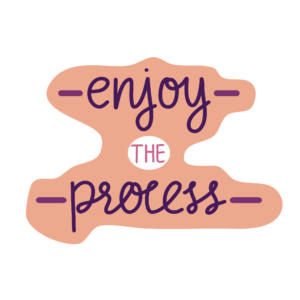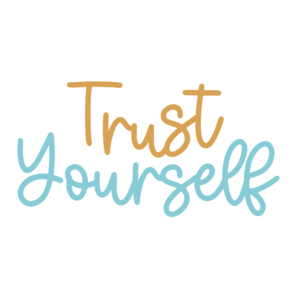What does productivity mean to you? For a long time, I believed productivity meant doing more—faster, harder, and without stopping. My to-do lists were endless, my planner was packed, and I measured my success by how much I could squeeze into a single day. But the constant hustle left me exhausted, and I realized that true success comes from slow productivity—a balanced, intentional approach that values progress over pressure.

Sound familiar?
Maybe you’ve felt the pressure too—the constant need to hustle, the guilt of taking a break, the frustration of not ticking off every item on your list. Productivity, for many, has become a race with no finish line, leading straight to exhaustion and burnout.
But what if I told you there’s another way?
A Sustainable Approach to slow productivity & Getting Things Done!
Slow productivity is about working with intention, not intensity. It’s about focusing on the quality of your work rather than the sheer quantity of tasks completed. Instead of burning yourself out trying to do everything at once, slow productivity allows you to move at a sustainable pace—so you stay productive without sacrificing well-being.
If that sounds like something you need, keep reading. I’ll show you how to embrace slow productivity and achieve your goals without the stress.
Instead of trying to power through every task at lightning speed, slow productivity encourages a deliberate and mindful approach. It’s about focusing on what truly matters and letting go of the pressure to do everything all at once.

Have you ever noticed that…
- You push yourself to be ‘productive’ but feel drained at the end of the day?
- Your long to-do list often leaves you feeling overwhelmed instead of accomplished?
- You rush through tasks but rarely feel present while doing them?
If so, slow productivity might be exactly what you need.
It’s not about doing less—it’s about doing things better, with more purpose, and in a way that sustains your energy instead of depleting it.
Why Slow Productivity Works Better Than Hustle Culture
We live in a world that glorifies being busy. The more we hustle, the more successful we’re supposed to be. But what if success wasn’t about doing more but about doing what matters most?
Here’s why slow productivity actually helps you get more done:
✅ Prevents burnout – Working at a sustainable pace means you don’t crash and lose motivation.
✅ Boosts creativity – When you slow down, your brain has space to come up with better ideas.
✅ Helps with focus – Deep, intentional work is more effective than constant multitasking.
✅ Encourages balance – You get things done without sacrificing rest and self-care.
Want a structured way to plan your time without feeling overwhelmed? Check out my ADHD Planner on Etsy—designed with time-blocking and productivity tools to help you work at your own pace.
How to Practice Slow Productivity
Here are some simple ways to embrace slow productivity in your daily life
Making the shift to slow productivity doesn’t mean doing less—it means working smarter and with more intention. Here’s how to start:
1. Prioritize Deep Work Over Multitasking
Multitasking feels productive, but it often leads to scattered focus. Instead, dedicate specific blocks of time to deep, uninterrupted work. (This is where a planner helps—time-blocking ensures you stay on track!)

A great way to ease into slow productivity is by starting a gratitude journal. Taking just a few minutes each day to reflect on what you’re grateful for helps shift your mindset from overwhelm to intentional focus. It sets a positive tone for your day and makes it easier to prioritize what truly matters.
👉 Related Post: How to Start a Daily Gratitude Journal
2. Set Fewer Goals (But Make Them More Meaningful)
Instead of tackling ten things at once, choose one or two high-impact tasks each day. Ask yourself:
🔹 Does this task align with my bigger goals?
🔹 Will completing this truly move me forward?
3. Work With Your Natural Energy Cycles
Some people are morning go-getters, while others hit their stride in the afternoon. Identify when you’re most focused and schedule your most important work for those times.
👉 Pro Tip: Use a Time Tracking Tool to analyze when you’re most productive!
4. Schedule Breaks—They Make You More Productive
Regular breaks reduce stress and improve focus. Try the Pomodoro technique—work for 25-50 minutes, then take a 5-10 minute break.
Want to structure your day more effectively? My ADHD Planner includes built-in time-blocking pages to help you balance work, rest, and life.
5. Plan Your Week with Intention
Instead of reacting to an endless task list, plan ahead with purpose. Set aside 10 minutes at the start of each week to:
✔️ Identify top priorities
✔️ Schedule deep work sessions
✔️ Block out time for breaks & self-care
👉 Related Post: Why Planning Isn’t Just About Productivity—It’s About Peace of Mind
6. Let Go of “Productivity Guilt”
Some days will be more productive than others—and that’s okay. Slow productivity is about progress, not perfection.
💡 Recommended Read: “Why You Get More Done When You Work Less” by Alex Soojung-Kim Pang

Your Next Steps
If you’ve been caught in the cycle of endless productivity, I hope this post gives you permission to slow down and be more intentional with your time.
Something led you here—maybe you’re tired of the hustle, maybe you want to approach your goals differently, or maybe you’re simply looking for a way to be productive without feeling overwhelmed.
Whatever it was, I invite you to try just one of these ideas today. You don’t have to overhaul your entire routine—small shifts can lead to big changes.
👉 Pick one of the strategies above and test it this week. You don’t have to overhaul your routine overnight—small, intentional shifts add up over time.
And if you need a simple system to help you stay on track, check out my Simple Planner—a tool designed for intentional, balanced productivity.
Start where you are.
Choose intentionality over hustle.
And remember, true productivity isn’t about how fast you go—it’s about how well you live along the way.

Some of the links in this post are affiliate links. This means that if you click on the link and make a purchase, I may earn a small commission at no additional cost to you. I only recommend products and services that I genuinely believe in and think will benefit you. Your support helps me continue to create content and provide value. Thank you for supporting Simply Simple Plans!

I feel like I have the permission to slow down after reading that! Thanks 😊
Hi Deepa, believe me I know exactly how that feels, just remember you don’t need permission to stop and smell the roses!
Pingback: Dilly-Dallying: The 2025 Trend for Mindful Leisure and Productivty - simplysimple.net